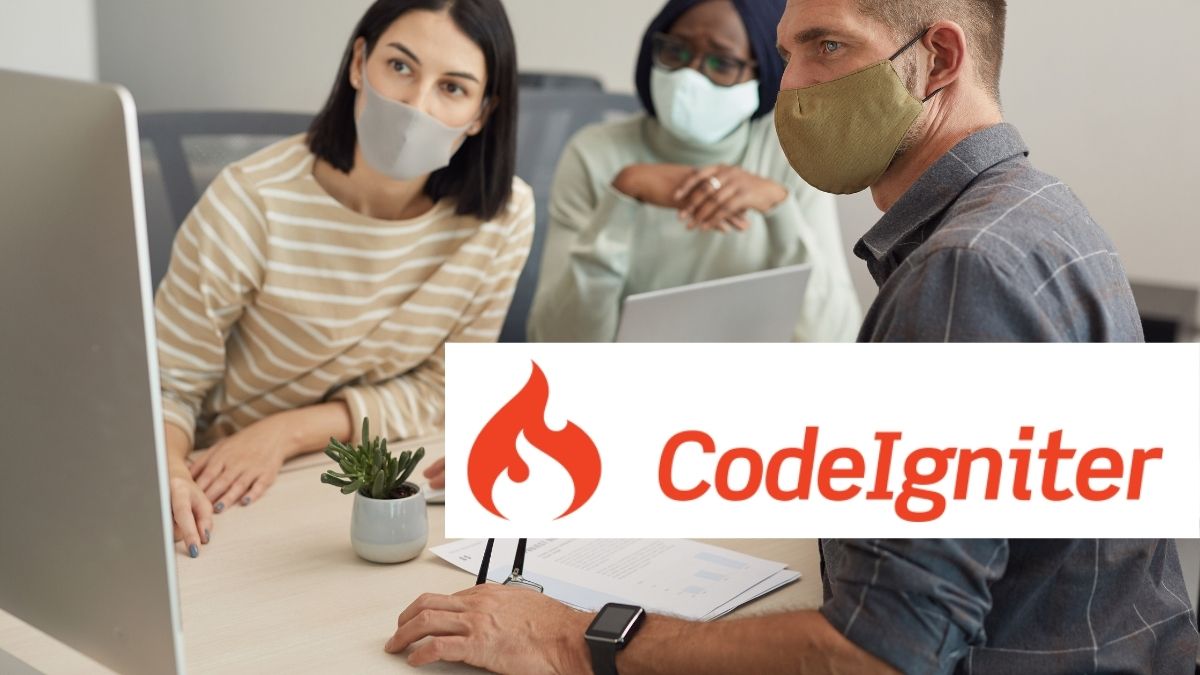Software Development
PHP Vulnerabilities: Injection Attacks, Exploits, and Scanners
Welcome to our blog about PHP vulnerabilities! In here, you will learn all about injection attacks, exploits, scanners, flaws and security issues related to the powerful scripting language. With our insights and tips on how to protect yourself against these threats, you will be sure to stay ahead of the curve on the ever-evolving cyber security landscape.
Introduction to PHP Vulnerabilities
Due to its popularity and broad usage, PHP has become a target for attackers. All software products are vulnerable, and PHP is no exception. It is important for web developers, system administrators and other people responsible for the security of websites to understand the nature of the vulnerabilities that may exist in their applications or the php core itself, how to identify them and mitigate the risk posed by these vulnerabilities.
Is PHP a vulnerability?
Is PHP a vulnerability?
Vote!
Drag the slider and make your voice heard.
Vote!
Drag the slider and make your voice heard.
Sorry.
Exceeded the limit of votes from one IP.
PHP vulnerabilities fall into several categories such as injection attacks (SQL injection, cross-site scripting), remote code execution (RCE) vulnerabilities, buffer overflows/format string/integer overflow issues, insecure directory configuration and insecure environment configuration. While some vulnerabilities are specific to certain versions of PHP or specific libraries such as cURL or GD library, many of these issues are present in many versions of PHP applications.
To help protect against these vulnerabilities, it is important to keep up with regular updates from the official PHP project. Regular security scans should also be done on all websites using PHP or related programs. Additionally setting appropriate permission on files can provide an additional layer of protection against attack from malicious users. It is also important to apply coding best practices when writing code especially when dealing with user input – use sanitization functions provided by language libraries/frameworks , such as mysql_real_escape_string() for MySQL databases; verfiy if data types match; always filter user data before using it; validate user input; use prepared statements for queries etc.
Developers should be regularly reminded about the importance of secure coding practices and complexity within application layers should be reduced as much possible by using secure libraries built specifically with security in mind.
Along with all other techniques used to protect web applications, security awareness within development teams plays a major role in defense against threats posed by potential hackers targeting vulnerable sites/applications written in PHP.
Types of Injection Attacks
Injection attacks often target the web application of a website and can exploit code in the database, operating system, or any other software installed on the server. Such vulnerabilities often allow malicious actors to gain unauthorised access to user data and inject malicious code into files or databases. Depending on the variety of attack, different types of injection attacks are used by attackers.
SQL Injection Attacks: SQL injections involve maliciously injecting Structured Query Language (SQL) commands inside user input fields that benefit an attacker’s objectives. By executing such commands on an app’s database server, this type of attack poses a major threat to data privacy by modifying or accessing guest personal information such as email addresses, credit card information and passwords
LDAP Injection Attacks: Lightweight Directory Access Protocol (LDAP) injection attacks involve leveraging directory technologies commonly employed for authentication purposes on web applications. An LDAP injection operates through ‘sniffing’ passwords from text fields within a web application’s pages then injecting well-crafted LDAP statements into these text fields for system infiltration and administrative privileges
PHP Remote Code Injection: Remote Code Injection attack involves sending encoded strings from remote locations that involve PHP scripts when being executed by a web server thereby taking over control of that site. This malicious code could ultimately grant access to confidential information stored in the databases or grant further remote access
URL Hijacking: URL hijacking is another injection attack which is more commonly seen alongside XSS (Cross-Site Scripting). It involves entering maliciously crafted URLs with payloads such as JavaScript and HTML snippets into parameters intended only for string values allowing attacks like keylogging, malware execution, steel page modification etc
Exploiting PHP Vulnerabilities
PHP is used in a variety of web applications to generate dynamic web pages. As a result, it is a common target for malicious attackers who are looking to exploit any vulnerabilities that the application may contain. The most common PHP vulnerabilities that can be exploited are SQL injection, cross-site scripting (XSS) attacks, remote code execution (RCE) and insecure file uploads.
SQL Injection: SQL injection occurs when an attacker is able to submit malicious SQL statements into an application’s query parameters or user input fields. Suppose the query or input field allows an attacker to execute any code they wish. In that case, they can retrieve sensitive data such as authentication credentials or sensitive customer information and can also modify or delete important data within the application’s database.
Cross-Site Scripting (XSS): XSS attacks occur when an attacker injects malicious code into HTML content on a website or web application, which then executes within a user’s browser without their knowledge or permission. This malicious code can be used to steal user credentials, launch phishing attacks on unsuspecting users and even hijack their session allowing the attacker full control over the targeted user’s account.
Remote Code Execution (RCE): RCE exploits allow attackers to execute arbitrary commands on a host environment through vulnerable PHP functions and parameters, allowing them to potentially gain full access beyond what would normally be possible by exploiting basic vulnerabilities such as buffer overflows and cross-site scripting attacks.
Insecure File Uploads: Insecure file uploads are one of the most commonly abused PHP vulnerabilities in web applications as it allows unauthenticated users to upload files containing malicious code onto vulnerable servers with no security checks in place. This could lead to devastating outcomes such as server compromise and wide-scale malware deployments inside and outside of your network.
Scanning for PHP Vulnerabilities
Scanning for PHP vulnerabilities is essential for helping to ensure the security of your website and web application. By scanning for PHP vulnerabilities, you can identify areas that need improving, such as outdated scripts or libraries and software components with known security issues. Keeping an eye on these things will help protect your application from malicious attacks such as exploit kits or Cross-Site Scripting (XSS) attacks.
When scanning for PHP vulnerabilities, it’s important to remember that the version of PHP being used needs to be up-to-date. Outdated versions are more likely to have known security flaws which can be exploited by attackers. Additionally, make sure all external third party libraries and frameworks are updated to the latest stable version, as these too may contain potential risks if left unchecked.
It’s also important to remember that manual scanning can only identify a limited range of potential problems and cannot detect all types of vulnerabilities. Automated tools such as code scanners provide a much more in depth look at code base and helps identify problems faster and more accurately than manual checking alone. These tools should be used regularly along with manual checks to get an accurate picture of any current or potential threats faced by a website or web application running on PHP.
Common PHP Flaws and Issues
While PHP is a highly effective and powerful tool for web programming, its widespread use has also made it a target for malware and malicious hackers. With millions of websites built in PHP, it’s important to stay aware of the potential vulnerabilities associated with this popular language.
The most common PHP flaws are:
-Code injection attacks: This threat involves injecting malicious code into an application, which allows someone to gain unauthorized access to your system.
-Buffer overflows: This type of attack occurs when too much information is sent to a program, which causes the data stored in the buffer to overflow or become corrupted. As a result, hackers can exploit this vulnerability and gain access to your system.
-SQL injection attacks: This attack technique involves exploiting the vulnerability of an SQL database by inserting malicious commands into an SQL query in order to gain access.
-Cross site scripting attacks (XSS): XSS is a type of attack where malicious code is injected into an HTML document and then executed by unsuspecting users’ browsers. The malicious code can hijack users’ sessions and obtain sensitive data such as passwords and financial information.
-Directory traversal vulnerabilities: Directory traversal vulnerabilities allow attackers to navigate through the filesystem of your web server in order to view sensitive files or gain access directly into other directories.
-Shell command execution attacks: Shell command execution attacks involve running scripts on your server that can potentially lead to undesired effects (such as deleting important files) or gaining complete control over your server if successful exploited Additionally, many popular frameworks such as WordPress have also been known to contain security flaws that can be easily exploited if not patched efficiently or consistently monitored for any suspicious activity.
It’s important that you stay informed about new security threats that may arise and regularly check any existing applications using PHP for any weaknesses or possible vulnerabilities before they become an issue
Preventing PHP Vulnerabilities
The use of insecure versions of PHP can make web applications vulnerable to attack. The most common security issues with PHP have to do with the language’s weak type checking mechanisms and its lack of built-in authentication and authorization controls. To prevent vulnerabilities, it’s important for developers to keep their software up-to-date, ensure that all user input is thoroughly validated, and avoid the use of known insecure coding patterns.
When working with PHP, it is essential to consider a number of factors related to security. First, developers should patch their web servers immediately when new security updates become available in order to stay secure. It is also important to pay close attention to the source code being used and always keep an eye out for potential security vulnerabilities. Finally, developers should take time to review their configuration settings for potential problems that could expose their systems or allow malicious actors access.
It is also important for developers using PHP to protect against cross-site scripting (XSS) attack vectors by implementing defense mechanisms such as data encoding, anti-virus scanning, input validation methods, server authentication and control over user accounts and authorizations. Additionally, developers must ensure that any third-party tools they use are regularly updated with the latest security patches or configurations in order minimize the risk of attackers exploiting any outdated or outmoded technologies.
Best Practices for Securing PHP
Security is a critical component of any development environment, but especially when using PHP. It’s important to remember that most PHP-based attacks are preventable if you take the appropriate precautions. Here are some best practices to help secure your application:
Enable Safe Mode: Safe Mode enables PHP applications to run with minimal privilege and thus protect against potential attack vectors from untrustworthy scripts or code. This can be enabled in the php.ini file or set as an argument for the PHP interpreter at runtime.
Input Validation: Ensure that any input you receive is not longer than expected, does not contain characters or strings where it shouldn’t, and does not have undesired malicious content such as command injects which can harm your system architecture or data itself. You should use regular expressions, whitelisting and api parameter validation methods to validate against malicious data.
Use Encryption: Encrypt all passwords and other sensitive information that you store as part of your application such as credit card information, session timeout values etc.. Cipher algorithms like AES256 should be used where required to further reduce risks associated with data leakage/theft. Additionally, if appropriate make sure connections to databases are encrypted using TLS encryption over known encryption methods such as SSL and SSH.
Authentication & Authorization Rules: Make sure users authenticate and authorize they actions before execution. Additionally make sure authorization is properly applied using roles rather than hard coding user specific access control mechanisms into your application code directly allowing for greater flexibility when defining authentication rules over time without relying on fully recompiling the code base each time changes need to be made across users.
HTTP Headers: HTTP Headers can add an additional layer of protection by mapping some of thehttp verbs used in requests such as GET POST OPTIONS PUT etc.. Supporting OWASP standard http headers like X-Frame-Options will help ensure pages / resources cannot be loaded from within a frame ensuring requests are limited to valid end points only reducing cross-site scripting (XSS) attack vectors significantly for example . Additionally these standards provide defenses against clickjacking attempts which have become increasingly common these days due to their ease of misuse if mis configured by careless developers/engineers
General Security Practices : Make sure you follow general security principles such are least privilege when granting system access by principals , logging all events generated at server side including errors also set up tools & processes needed for continual audits into applications behaviour throughout its life cycle & regularly check/verify logs matches up with what actually occurred during those events ensuring detected vulnerabilities are patched up immediately once they discovered
Conclusion
When it comes to developing applications in PHP, there are a number of steps to take in order to prevent potential vulnerabilities and keep your system secure. It is important to remain vigilant when coding in this language, as there are some fairly common vulnerabilities specific to PHP and its usage.
Adhering to best practice and security guidelines when coding can help minimize the risks associated with writing code in PHP. Utilizing external tools (such as those mentioned above) can also be beneficial in identifying issues before they surface, as well as informing you of appropriate measures that should be taken when dealing with such threats. Additionally, working with experienced web developers who are versed in security practices can also significantly reduce the risk of falling victim to an attack by providing a thorough review process for all changes made throughout the development cycle.
It is also important not to forget about periodic code reviews and regular information gathering from third party providers and forums — all of which will further assist with identifying potential threats. By remaining proactive about your website’s security, you’ll be able to effectively safeguard your system from malicious attackers aiming to exploit any sort of vulnerability present within your codebase.
-

 Cyber Risk Management2 days ago
Cyber Risk Management2 days agoHow Much Does a Hosting Server Cost Per User for an App?
-

 Outsourcing Development2 days ago
Outsourcing Development2 days agoAll you need to know about Offshore Staff Augmentation
-

 Software Development2 days ago
Software Development2 days agoThings to consider before starting a Retail Software Development
-

 Grow Your Business1 day ago
Grow Your Business1 day agoThe Average Size of Home Office: A Perfect Workspace
-
Solution Review1 day ago
Top 10 Best Fake ID Websites [OnlyFake?]
-
Business Imprint2 days ago
How Gaming Technologies are Transforming the Entertainment Industry










